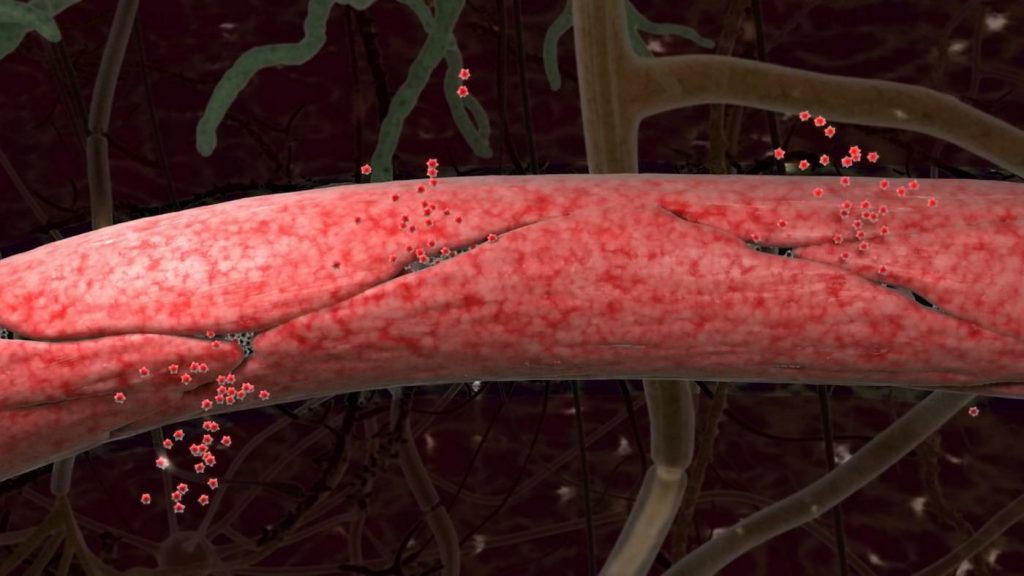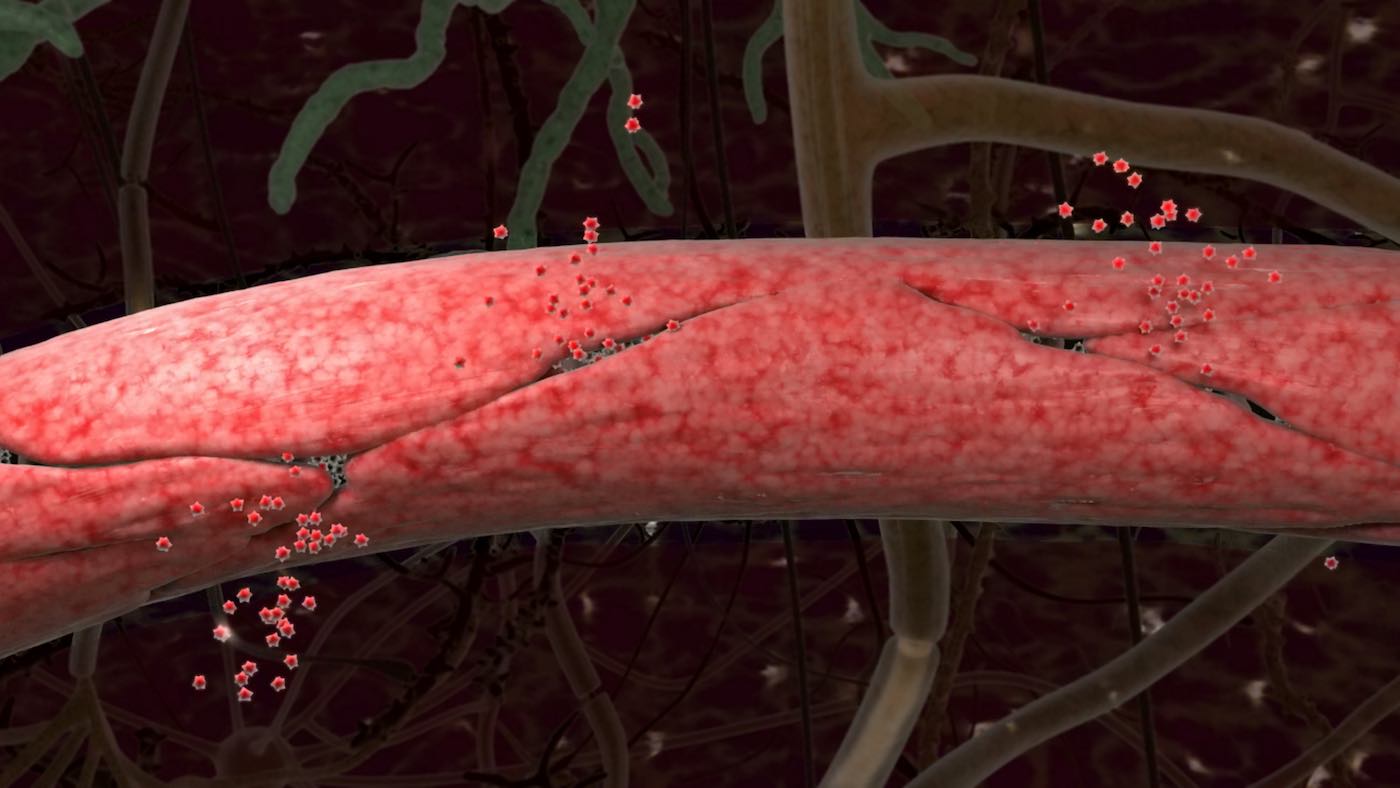A study suggesting dementia may be caused by leaky blood vessels in the brain was welcomed by the Alzheimer’s Society who said it could lead to earlier diagnosis and potential treatments.
A research team at the University of Southern California found that leaky capillaries turned out to be early onset indicators of Alzheimer’s disease, signaling cognitive impairment before the hallmark toxic protein buildup begins.
They now believe that repairing the leaks could slow down the devastating neurological illness—or even prevent the debilitating condition. Though cautioning that future studies are needed, one co-author called the results “eye-opening.”
Dr James Pickett, head of research at Alzheimer’s Society, said: “Our researchers have been working for years to investigate how blood vessel health links to dementia, and to understand how leaks in the blood brain barrier could increase the risk of dementia.
“This study suggests these leaks are happening very early in the development of Alzheimer’s, sometimes even before toxic proteins build up, and could therefore be used to diagnose the disease earlier, or even be a target for potential treatments.”
The five year study of 161 older people published today in Nature Medicine found that those with the worst memory problems also had the most leakage, regardless of whether abnormal amyloid and tau were present.
“If the blood-brain barrier is not working properly, then there is the potential for damage,” said co-author Arthur Toga, a director at USC’s Keck School of Medicine. “It suggests the vessels aren’t properly providing the nutrients and blood flow that the neurons need. And you have the possibility of toxic proteins getting in.”

Berislav Zlokovic, another director at the school’s Zilkha Neurogenetic Institute said this could open the door to much earlier diagnosis using brain scans. Then drugs could be used to plug the leaks, before symptoms begin.
“Earlier diagnosis would allow us to test drugs on people while there’s still a chance to reverse it,” notes Pickett.
– Photo provided by SWNS




















